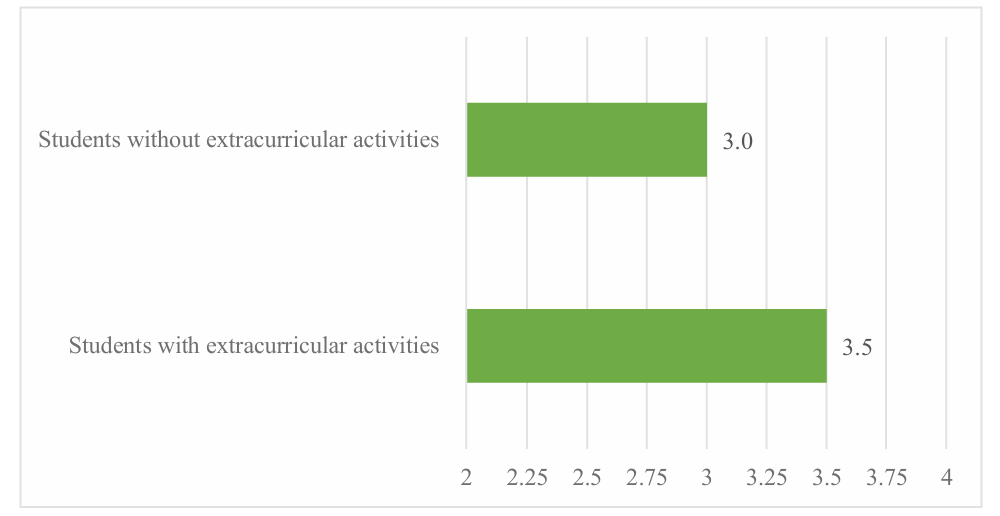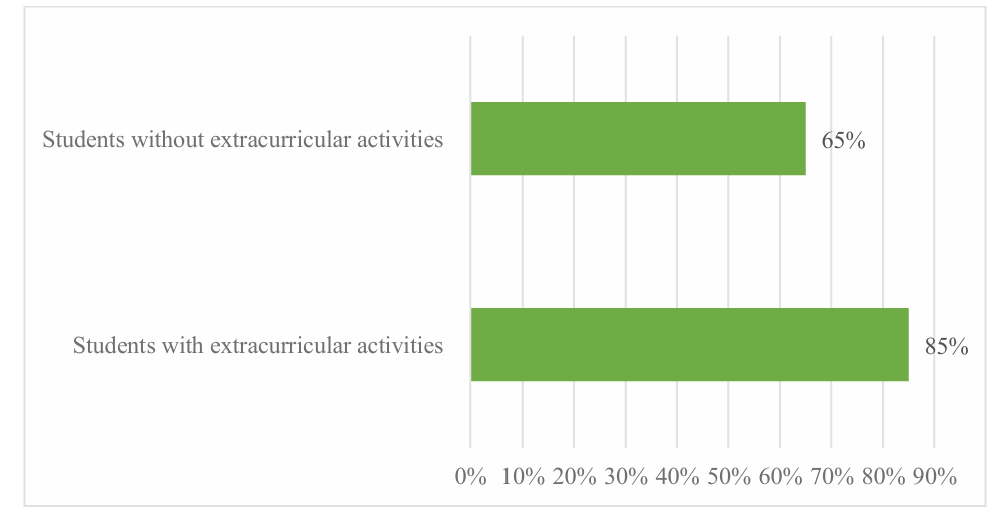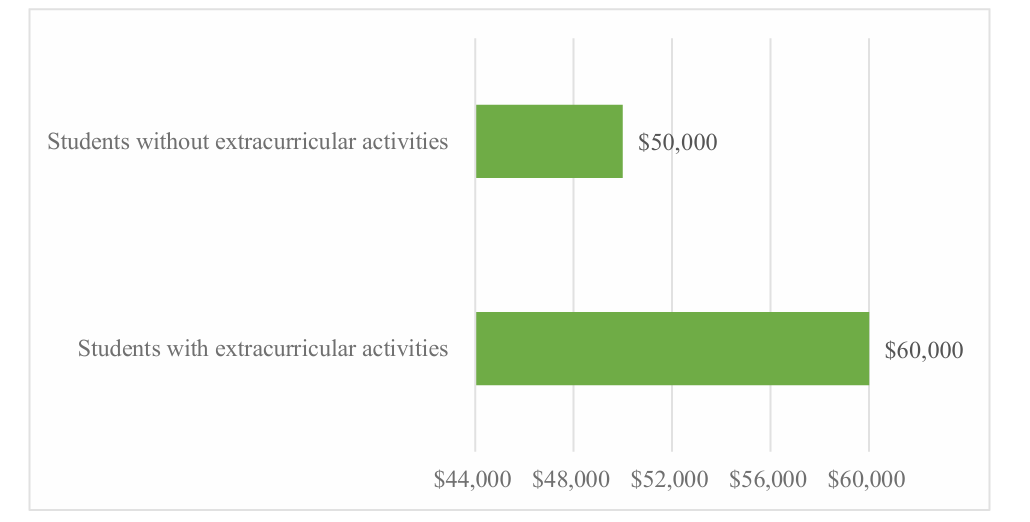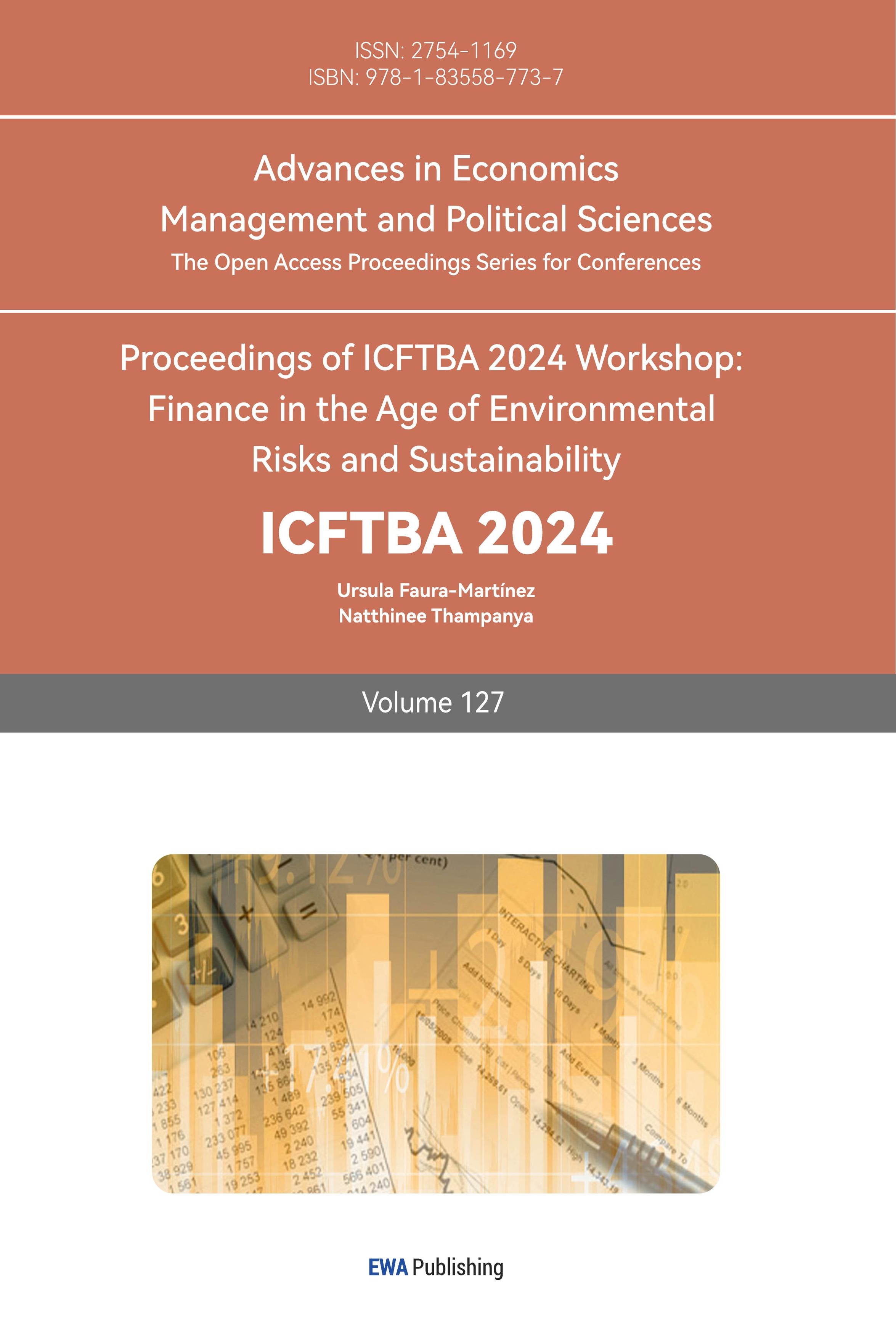1.Introduction
Education is important to everyone and is essential for individuals to achieve upward social mobility and realize their potential. The importance of education is reflected in its multifaceted impact on social development. Education is not only a means of enhancing individual knowledge and skills, but also an important tool for promoting economic growth, reducing poverty, and increasing social mobility [1]. In the United States, however, the ideal of equal educational opportunity has yet to become a reality. There are still inequalities in the distribution of educational resources, with disparities stemming from socioeconomic status, geographic location, and ethnic background to name a few. Understanding and addressing these inequalities is critical, not only for individual development but also for broader societal development. The United States’ education system is characterized by a decentralized structure and differences in funding between public and private schools. Regional differences also lead to differences in the amount of money local governments devote to the education system. These patterns create inequalities, as schools in affluent areas have access to more financial resources than schools in less developed areas.
For many underfunded schools, interest-based programs such as music, art, and physical education, are among the first to be undermined, even though there is plenty of evidence that confirms that these programs are very helpful to student development. Students' decisions and interests may be correlated [2]. This reflects the importance of interest-based classes. Interest-based courses and extracurricular activities can develop students' non-academic skills in areas such as teamwork, leadership, and more. These programs provide students with the opportunity to explore and develop their interests, resulting in a more well-rounded education and better preparation for their future careers. Previously, scholars have examined the imbalances in the distribution of academics in the United States. Systemic inequalities exist in the US education system, and these disparities contribute to a vicious cycle of poverty that limits opportunities for many students [3].
This paper analyzes the unequal distribution of educational resources in the US based primarily on the interest-based curriculum. It first explains the current state of the educational world and the differences that exist between schools in the United States. It then analyzes the effects of the inequality in education, which will not only affect the students but also the society. At the end of the article, solutions and recommendations for this situation are also mentioned.
2.Overview of Current Situation
The inequality of educational resources in the United States has always been discussed. This inequality is not only reflected in the distribution of basic academic resources but is particularly evident in extracurricular courses. Inequality in resources has accumulated over time, depriving many people of access to quality education [4].
The distribution of educational resources in the United States is heavily influenced by regional economic development, particularly the disparity between urban and rural areas. Urban areas tend to have many educational institutions, including universities, colleges, and specialized schools. This creates a rich environment of educational opportunities and resources [5]. Since taxes are higher in urban areas, urban schools can offer a rich extracurricular program that includes art, music and sports, as well as a variety of clubs and extracurricular activities. These programs not only enrich the academic lives of students but also provide them with opportunities to explore their interests and development.
However, in rural areas, the lack of resources for education is a serious problem. Schools in rural areas have lower levels of funding, fewer educational opportunities, and limited access to extracurricular activities [6]. This has led to limitations in the curricula of these schools. This regional disparity not only affects students' individualized development but also further exacerbates the educational achievement gap between urban and rural areas.
In addition to regional differences, inequality of resources between school types is a non-negligible problem in the US education system. There are significant differences between public and private schools. Public schools rely heavily on local taxes and state grants for funding, which are often subject to strict budgetary constraints. In the face of funding shortfalls, extracurricular courses are often cut from the programs. Even when extracurricular courses are available, it is often difficult for public schools to provide high-quality facilities and specialized teaching support. Private schools, on the other hand, often rely on tuition revenue, alumni donations, and foundation support to maintain a high level of funding. As a result, most private schools can offer a wide variety of extracurricular courses. In addition, private schools often have state-of-the-art facilities, which provide an excellent learning and development environment for students.
Table 1 below demonstrates the educational differences between public and private schools in the United States. Private schools typically have more financial resources, smaller class sizes, and more diverse curricula and activities, which allows them to provide a more personalized educational experience. Public schools, on the contrary, have resources that are more constrained by public finances, which can lead to some limitations. Inequality in educational resources is not only reflected in the differences in funding and equipment, but also in the variety and quality of programs and opportunities for student participation. This phenomenon is evident across a wide range of disparities.
Table 1: Differences between public and private schools (Source: National Center for Education Statistics and National Association of Independent Schools).
|
Public Schools |
Private schools |
|
|
Source of funds |
Primarily from local, state and federal taxes |
Primarily from tuition, endowments and private funding |
|
Tuition |
Free for local students |
Tuition is required and usually ranges from $5,000 to over $50,000 |
|
Per capita expenditures |
Average of about $13,118 per student |
Usually $20,000-$40,000 or more |
|
Curriculum |
Follows state regulations |
Curriculum is flexible, often offering advanced courses such as IB and AP |
|
Class Size |
Between 16:1 and 20:1 |
Between 8:1 and 12:1 |
|
Extracurricular activities |
Extracurricular activities vary depending on budgetary constraints |
Offer a wide variety of activities including arts, sports and clubs |
3.Impact of Unequal Distribution
3.1.Impact on Students
Disparities in the distribution of educational resources in the United States are a long-standing social problem, and the effects of this inequality are far-reaching when it comes to extracurricular courses. This unequal distribution of resources has a direct impact on students' academic performance, mental health, social skills, and future career development.
Interest programs play an important role in the overall development of students. Such courses stimulate students' interest in specific subjects or fields and increase their motivation to learn [7]. These programs not only enrich students' learning experience, but also help them develop creativity, critical thinking, and problem-solving skills.
Extracurricular courses are important to the mental health and emotional development of students. Art, music, and sports activities provide students with opportunities to express their emotions, reduce stress, and improve their self-confidence. These programs not only allow students to find ways to relax outside of their studies, but also help them to better manage their emotions as they face life and academic challenges. However, in the context of unequal educational resources, many students do not have access to these programs that contribute to emotional development. When students are unable to express their emotions through healthy outlets, they are more likely to feel stressed and anxious, and prolonged exposure to this state may lead to worsening mental health issues.
Extracurricular courses also play an important role in developing students' social skills. Through participation in team sports, students can build friendships with their peers and learn how to work together in a team. However, in the context of unequal distribution of educational resources, many students will lack opportunities to participate in these social activities. This may result in them feeling isolated and alienated in school and having difficulty integrating into their peer groups.
Inequality in educational resources also has a profound impact on student's career preparation and future development. Hobbies and interest-based programs provide students with opportunities to explore interests, discover potentials, and develop skills. Students are exposed to different fields and learn about their interests and strengths, and this exploration not only helps them find motivation in their academics but also lays the foundation for their future career planning. All of these are crucial to future career choices.
When educational resources are distributed unequally, many students, especially those from resource-poor communities, lack this opportunity to explore and thrive. Inequality in educational resources usually results in students from less privileged family backgrounds often not having access to high-quality educational resources, which limits their opportunities to enter high-income, high-status careers [8]. They may not have the opportunity for in-depth exposure to art, music, or physical education programs, and therefore are unable to discover or develop these potential career interests. This limitation not only hinders their career choices but may also lead them to feel lost in their future career paths.
Figure 1 shows that students with extracurricular activities typically outperform students without extracurricular activities in terms of Grade Point Average (GPA) and standardized tests. In general, students with a 3.5 GPA can apply to the top 50 universities in the US, while students with a 3.0 GPA can only be admitted to the top 50 to 100 US universities. Therefore, a high GPA can help applicants get into many of the more competitive colleges.

Figure 1: Difference in GPA (Source: National Center for Education Statistics).

Figure 2: Difference in university enrolment (Source: National Center for Education Statistics).
Figure 2 emphasizes that students with extracurricular activities are also more likely to attend college, possibly because their performance in academic and extracurricular activities increases their competitiveness for college applications. These activities demonstrate skills such as leadership and teamwork that help students stand out in the application process.
Figure 3 indicates that, from an occupational earnings perspective, students with rich extracurricular program experiences tend to earn more, which is related to the skills and experiences they gained during their education. Extracurricular activities can help students develop valuable soft skills, such as teamwork and communication skills, which are extremely important in the workplace.

Figure 3: Difference in average income (Source: National Center for Education Statistics).
Inequalities in educational resources in the United States, especially disparities in extracurricular programs, have a profound impact on the overall development of students. Academic achievement, mental health, social skills, and future career preparation are all limited by a lack of resources.
3.2.Impact on the Society
Inequalities in educational resources, especially gaps in extracurricular courses, directly exacerbate social inequality and stratification. In resource-rich communities, students have access to diverse and high-quality extracurricular courses that help them develop well-rounded competencies that make it more likely that they will attend prestigious schools, obtain high-paying careers, and further solidify their socioeconomic status.
Conversely, in resource-poor communities, students often lack access to these programs, resulting in a disadvantage in their personal development and career competitiveness. Inequality in educational resources amplifies social inequality and hinders the social mobility of children from low-income families [9]. This unequal educational experience makes social class mobility more difficult. The phenomenon of class solidification is not only detrimental to individual development but also weakens the fairness of society.
4.Solutions and Suggestions
To address the unequal distribution of educational resources in the United States described above, particularly the disparities in interest-based programs, education-related policies need to be enhanced. First, the government should increase funding support for schools in low-income and resource-poor areas, especially funding dedicated to art, music, and physical education programs. Second, the government should develop a more equitable resource allocation plan. The government should increase funding for public schools in low-income areas to narrow the resource gap with schools in wealthier areas [10]. The government should ensure that all schools are provided with the necessary resources to offer a well-rounded curriculum, including courses of interest so that students can benefit from a well-rounded education.
Strengthening the professional skills of teachers is also one of the strategies. The government can pay more attention to the professional development of teachers, especially in interest-based courses and ensure that teachers have the expertise and skills to teach these courses by providing more training opportunities and professional development programs. The government could improve the quality of teachers' teaching and students' learning outcomes through increased investment in teacher training programs, especially in resource-poor schools. The government should also take steps to attract and retain good teachers. This can be achieved by increasing teachers' salaries, providing additional benefits, and creating a better working environment. Particularly in low-income communities and rural areas, attracting and retaining good teachers is key to improving the quality of the curriculum. Through policy incentives, more educators can be encouraged to join these fields and make up for the shortage of teachers.
The promotion of interest-based curricula can also improve the situation of unequal distribution. The promotion and implementation of such programs not only improves students' academic performance but also fosters their interest in and ability to learn [11]. The education sector should set national standards to ensure that all schools include a certain percentage of interest courses in their curriculum and provide resources and financial support. The provision of diverse interest courses in schools can enable students to discover and develop their interests and strengths in the learning process. In addition, schools can partner with community organizations and non-profit agencies, such as community arts centers, to provide curricular support to schools, thus making up for the lack of resources in schools.
Individual efforts can also play an important role in addressing the unequal distribution of educational resources in the United States. Students can take the initiative to seek out community resources to fill the gaps in school resources. By actively participating in these opportunities, students can expand their areas of interest. Students can also enrich their knowledge and skills through self-learning and online resources. Today, the Internet provides a wealth of learning platforms that offer a wide range of free courses and tutorials across a variety of fields. Students can choose suitable courses according to their interests, learn independently, and develop their strengths.
5.Conclusion
This paper comprehensively examines the critical issue of inequality in educational resources in the United States, with a special emphasis on inequalities in extracurricular activities. These inequalities have profound implications, as they affect not only students' academic performance, but also their social development, mental health, and future career prospects. Analysis shows that students in underfunded schools are at a distinct disadvantage due to their inability to participate in diverse and high-quality extracurricular activities. This disparity can make social class more difficult to change, perpetuating the cycle of poverty and limiting opportunities for many students. This paper proposes several solutions to these problems, including increasing government funding for schools in low-income areas, ensuring equitable distribution of educational resources, promoting interest-based curricula, and enhancing professional development for teachers. Utilizing community resources to support schools is also suggested as a strategy for closing the educational opportunity gap.
However, this paper has some limitations. The analysis is largely based on existing literature and statistics, which may not fully reflect the complexity of educational inequalities in different regions and communities due to limited available resources. In addition, the proposed solutions, while theoretically defensible, may face significant challenges in implementation due to political and economic reasons. Future research could focus on more localized qualitative studies to better understand the specific needs of different communities and develop more targeted interventions. The reality of the distribution of education resources can be further explored in future studies through methods such as surveys and data modelling. In particular, the impact of parents' academic background and social factors on the allocation of educational resources can be examined. By addressing these limitations and continuing to explore this issue, future research will help develop more effective strategies to create a more equitable education system in the United States.
References
[1]. Chankseliani, M. and McCowan, T. (2020) Higher education and the Sustainable Development Goals. Higher Education, 81(1), 1–8.
[2]. Peterson, E. K., Van Noy, M., Scovill, S. and Edwards, R. (2024). Not “Just a Hobby”: The Influence of Early Interest and Hobbies on Community College IT Student Decision-Making. Journal of advanced technological education, 3(1), 1-12.
[3]. Darling-Hammond, L. (2009) Teacher Education and the American Future. Journal of Teacher Education, 61(1-2), 35–47.
[4]. Carter, P. L., Welner K. G. and Ladson-Billings, G. (2013). Closing the opportunity gap: what America must do to give every child an even chance. Oxford; New York: Oxford University Press.
[5]. Welsh, R. O. and Swain, W. A. (2020) (Re)Defining Urban Education: A Conceptual Review and Empirical Exploration of the Definition of Urban Education. Educational Researcher, 49(2), 90–100.
[6]. Eisenberg, A. M. (2020) Distributive justice and rural America. Boston College Law Review, 61, 189.
[7]. Renzulli, J. S., Gubbins, E. J., McMillen, K. S., Eckert, R. D., & Little, C. A. (1986). Systems and models for developing programs for the gifted and talented. Routledge.
[8]. Blanden, J., Doepke, M. and Stuhler, J. (2023) Educational inequality. In Handbook of the Economics of Education Elsevier, 6, 405-497.
[9]. Entrich, S. R. (2020) Worldwide shadow education and social inequality: Explaining differences in the socioeconomic gap in access to shadow education across 63 societies. International Journal of Comparative Sociology, 61(6), 441–475.
[10]. Hoffmann, F., Lee, D. S. and Lemieux, T. (2020) Growing Income Inequality in the United States and Other Advanced Economies. Journal of Economic Perspectives, 34(4), 52–78.
[11]. Renninger, K. A. and Hidi, S. E. (2021) Interest development, self-related information processing, and practice. Theory into Practice, 61(1), 1–12.
Cite this article
Lian,J. (2024). An Analysis of Inequality in Educational Resources in the United States. Advances in Economics, Management and Political Sciences,127,163-169.
Data availability
The datasets used and/or analyzed during the current study will be available from the authors upon reasonable request.
Disclaimer/Publisher's Note
The statements, opinions and data contained in all publications are solely those of the individual author(s) and contributor(s) and not of EWA Publishing and/or the editor(s). EWA Publishing and/or the editor(s) disclaim responsibility for any injury to people or property resulting from any ideas, methods, instructions or products referred to in the content.
About volume
Volume title: Proceedings of ICFTBA 2024 Workshop: Finance in the Age of Environmental Risks and Sustainability
© 2024 by the author(s). Licensee EWA Publishing, Oxford, UK. This article is an open access article distributed under the terms and
conditions of the Creative Commons Attribution (CC BY) license. Authors who
publish this series agree to the following terms:
1. Authors retain copyright and grant the series right of first publication with the work simultaneously licensed under a Creative Commons
Attribution License that allows others to share the work with an acknowledgment of the work's authorship and initial publication in this
series.
2. Authors are able to enter into separate, additional contractual arrangements for the non-exclusive distribution of the series's published
version of the work (e.g., post it to an institutional repository or publish it in a book), with an acknowledgment of its initial
publication in this series.
3. Authors are permitted and encouraged to post their work online (e.g., in institutional repositories or on their website) prior to and
during the submission process, as it can lead to productive exchanges, as well as earlier and greater citation of published work (See
Open access policy for details).
References
[1]. Chankseliani, M. and McCowan, T. (2020) Higher education and the Sustainable Development Goals. Higher Education, 81(1), 1–8.
[2]. Peterson, E. K., Van Noy, M., Scovill, S. and Edwards, R. (2024). Not “Just a Hobby”: The Influence of Early Interest and Hobbies on Community College IT Student Decision-Making. Journal of advanced technological education, 3(1), 1-12.
[3]. Darling-Hammond, L. (2009) Teacher Education and the American Future. Journal of Teacher Education, 61(1-2), 35–47.
[4]. Carter, P. L., Welner K. G. and Ladson-Billings, G. (2013). Closing the opportunity gap: what America must do to give every child an even chance. Oxford; New York: Oxford University Press.
[5]. Welsh, R. O. and Swain, W. A. (2020) (Re)Defining Urban Education: A Conceptual Review and Empirical Exploration of the Definition of Urban Education. Educational Researcher, 49(2), 90–100.
[6]. Eisenberg, A. M. (2020) Distributive justice and rural America. Boston College Law Review, 61, 189.
[7]. Renzulli, J. S., Gubbins, E. J., McMillen, K. S., Eckert, R. D., & Little, C. A. (1986). Systems and models for developing programs for the gifted and talented. Routledge.
[8]. Blanden, J., Doepke, M. and Stuhler, J. (2023) Educational inequality. In Handbook of the Economics of Education Elsevier, 6, 405-497.
[9]. Entrich, S. R. (2020) Worldwide shadow education and social inequality: Explaining differences in the socioeconomic gap in access to shadow education across 63 societies. International Journal of Comparative Sociology, 61(6), 441–475.
[10]. Hoffmann, F., Lee, D. S. and Lemieux, T. (2020) Growing Income Inequality in the United States and Other Advanced Economies. Journal of Economic Perspectives, 34(4), 52–78.
[11]. Renninger, K. A. and Hidi, S. E. (2021) Interest development, self-related information processing, and practice. Theory into Practice, 61(1), 1–12.









